Did you recently discover the Albino Oscar fish? Does its unique features fascinate you? Are you ready to add it to your school of fish? This article will give you all the information you need to make the Albino Oscar a great choice from special care tips to breeding.

Discover the Secrets to Keeping Albino Oscars Healthy and Happy
This Albino Oscar fish is part of the Astronotus Ocellatus family.
Many aquarium enthusiasts and fishkeepers love this species for its fascinating Oscar fish traits. They’re intelligent, interactive, easy to maintain, and make for great tank mates.
Let’s look into these unique aquarium fish features and why they’ve become popular amongst fishkeepers.
History and Origins
First, I’ll dive into Albino Oscar’s history so you can understand its origins before getting to its current state.
The Albino Oscar started its journey to aquarium fame from the South American Amazon River basin. It naturally grows in slow waters surrounded by vegetation, making it a tropical fish.
Too often, people make small mistakes like building the wrong tank types and traumatizing their fish. So, I recommend creating a tank that mimics its natural home to avoid becoming part of the failed tropical fish habitat stories.
Physical Characteristics

When listing eye-catching fish colors, you can’t skip the Albino Oscar’s distinctive white and sometimes light pink coloration. It also has striking red or pink eyes with other unique features of Oscars, including their oval bodies, round heads, and long flowing fins.
The Albino Oscar fish can grow up to 12 – 14 inches long, given the right conditions. This stunning Albino Oscar fish’s appearance makes it stand out in any aquarium, no matter the amount of other fancy fish.
Now that you can identify the Albino fish’s physical traits, let’s talk about the tank conditions that will allow the best growth.
Ideal Tank Conditions
The perfect tank setup for Albino Oscars is different from that of regular Oscar fish because of their sensitive eyesight and skins. Creating a healthy Oscar habitat starts by simulating the Amazon River basin.
Choose a tank that can hold from 75 – 100 gallons of water for housing a single to multiple Albino Oscar fish. Then, set the water parameters. Here’s how you can prepare optimal water conditions without compromising your pet’s health:
- Keep the temperature warm at 74℉ – 80℉
- Maintain a pH balance of 6.5 – 7.5
- Ensure the hardiness is moderate at 5 – 20 dGH
Avoid excess lighting, as it can hurt your Albino Oscar’s eyes. Create hiding spots with the decor and use hardy plants such as Anubias to beautify the substrate.
Other essential aquarium tips include using a filtration system to ensure clean waters and applying an air pump for adequate aeration and water circulation.
Diet and Nutrition
Albino Oscar fish have the same dietary needs as Oscar fish, so you don’t need to get any special food for your pets. They’re omnivores which eat plants and animals. Here are some healthy food choices for Oscars you can implement into your pets’ diets:
- Commercially-made flakes and pellets
- Freeze-dried food
- Frozen food
- Live food like Earthworms, Krill, and Bloodworms.
- Vegetables like cucumber slices, peeled peas, and blanched spinach.
Use a controlled feeding frequency of less than 3 minutes at most twice daily to monitor your Albino Oscar’s intake. You must implement a balanced diet for thriving Oscars or risk health issues from overfeeding and malnutrition.
For more on feeding your aquatic pets check out The Ultimate Guide to Fish Food: Pros and Cons & Best Choices!
Common Health Issues
Keeping Albino Oscars healthy is a full-time task. In addition to controlling their food intake, you must also note their genetic predispositions and physical traits.
They’re prone to common Oscar fish diseases like Ich, Hexamita, Dropsy, and Bacterial Infections but also risk eye and skin problems.
Ich
Ich is a grainy white spot on your fish’s body caused by the Protozoan parasite. It’s hard to spot on Albino Oscar fish because they’re naturally pale, but if you look closely, you’ll notice the grainy spot.
Treatment: increase the water temperature to 82 – 86 to kill the parasite and rub Ich treatment medication on its skin.
For more details checkout our article on How to Treat Ich Outbreaks in Your Freshwater Fish!
Hexamita (Hole in the Head)
Albino Oscars can get holes in their head resulting from malnutrition, parasites, or a physical reaction to poor water quality.
Treatment: Change the water, adjust your Albino Oscar’s diet to a balanced diet, and use medication to heal deep holes. You can also consult with a fish vet for prescriptions.
Dropsy
Your Albino Oscar may develop a swollen abdomen with raised scales, which can cause a loss of appetite and fatigue while swimming. Dropsy is a physical manifestation of a bacterial infection of the internal organs, typically the kidney.
Treatment: Treat your tank water and ensure it has the right parameters. You can also add aquarium salt to kill the bacteria and use antibiotic medication on your fish’s body or orally.
Bacterial Infections
Other bacterial infections caused by untreated injuries, stress, or poor water quality could cause redness on your Albino Oscar fish’s body.
Treatment: Immediately quarantine your fish and change the water in the tank. Use antibiotic treatments like medicated creams and oral meds for your pets. You can get a prescription from a fish vet.
Eye Problems
Albino Oscars are genetically predisposed to albinism. They could get cloudy eyes from fungal infections, swollen or red eyes from injuries and damages, or protruding eyes from bacterial infections.
In the worst-case scenario, your Albino Oscar may become blind. In that case, create a familiar habitat and do your best not to rearrange its settings. That’ll give your pets the confidence to live a full life despite their disability.
Treatment: Identify the cause of the eye problem before treating it. It is best to visit a fish vet for diagnosis to avoid using the wrong medication.
Breeding Albino Oscars

If you want to achieve breeding success with Albino Oscars, you must follow these steps carefully.
Breeding Stage and Tank Setup
First, ensure you have the ideal Oscar fish tank setup. Get a large enough tank to hold up to 75 gallons for one fish and 100 gallons for pairs. Build its interior with enough hiding spots for spawning and hardy plants to mimic its natural habitat.
Check the water parameters, then condition your breeder fish to prepare for spawning. Feed them a balanced diet to keep them healthy.
This video has been very helpful in identifying the sex of Oscar fish, I highly recommend it:
Oscar Fish Spawning Guide
The Albino Oscar likes clearing the space for its spawning, so ensure your breeding tank has enough hiding spots and flat surfaces covered with moveable substrates.
When it’s time to spawn, the male chases the female and nudges her belly to release eggs for external fertilization. After laying hundreds to thousands of eggs in one spawning session, you must separate the adults from their offspring. Within 4 to 7 days, the eggs will hatch.
Raising Healthy Oscar Fry
Albino Oscar fish fry, like other fancy fish fry, first feeds on their yolk sacs in their first few days of life. Then, it’s left to you as the keeper to feed them infusoria and liquid meals until they can start eating normal Oscar food. Start with crushed flakes and baby brine shrimp.
Ensure the water parameters are perfect during this stage because the fry is more sensitive than adult Albino Oscar fish.
Overcoming Breeding Challenges
Typical breeding challenges you’ll face include:
- Aggression as some fish grow bigger than others and need more space for movement
- Balancing parental care with predation. Normally, you should leave the Oscar fish to fan its eggs and provide oxygen for them, but then you risk them eating the eggs. So, it’s safer to move them from the breeding tank.
- Immaculate water parameters. Change your tank water twice as often as you typically do for older Albino Oscar fish.
Compatibility with Oscar Fish

If you’re running a community tank, finding friends for your Albino Oscar becomes your priority. Although they’re territorial with large personalities, it doesn’t hurt to mix them with compatible species.
Choosing the best tank mates for Oscars depends on mutual needs.
Which fish or water-dwelling species survives in medium-sized to large tanks? Which species can handle the Albino Oscar’s aggression and competitive edge? Your goal is to achieve community tank harmony with Oscars.
Some compatible species you can choose include Jack Dempseys, Firemouth Cichlids, Large Common Pleco Catfish, which will maintain its corner of the tank, Lage Gouramis, and Silver Dollars.
They’re the best options for avoiding fish conflicts in your tank.
Special Care Requirements
Before parting, I’ll leave you with some special care tips for Albino Oscars.
Maintenance Guide for Oscar Tanks
Use only soft substrates like fine gravel and sand to make it safe for your pets when they start sifting. Change the water as often as possible, at least once a week, and use a quality filtration system to keep it clean.
Handling and Grooming Oscars
Oscars are territorial fish, so they don’t like being touched. If you must move them, use a soft net and don’t make it a habit.
Support their bodies when grooming their fins and scales to avoid hurting their internal organs. Use gentle tools for trimming overgrown fins and soothing creams after grooming. Finally, fast the fish when they’re bloated to prevent obesity.
Ensuring Oscar Fish Well-Being
Ensuring Oscar fish’s well-being is simple if you adopt safe health practices and use the nutritional tips in this guide. Feed them only a balanced diet of plant and animal-based meals and watch their health for signs of decline.
Maintain low light to protect their eyesight, and always do a wellness check by watching for behavioral changes.
Conclusion
That’s all about mastering Albino Oscar fish care and maintaining a top-quality aquarium. Remember that this species isn’t that different from other Oscar fish, but I included some unique fishkeeping insights based on its peculiarities.
A quick recap of the key Oscar fish tips include:
- They get aggressive during feeding.
- They’re territorial
- The Albino Oscar is prone to eye and skin illnesses.
However, other general Oscar tips, like breeding and feeding, remain the same. Now, you’re ready to own your Albino Oscar aquarium.

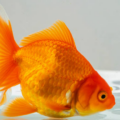


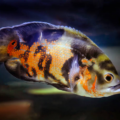


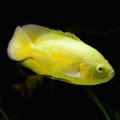
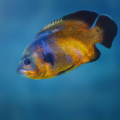

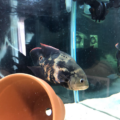
1 thought on “Mastering Albino Oscar Care: Your Complete Guide to a Thriving Aquarium ”